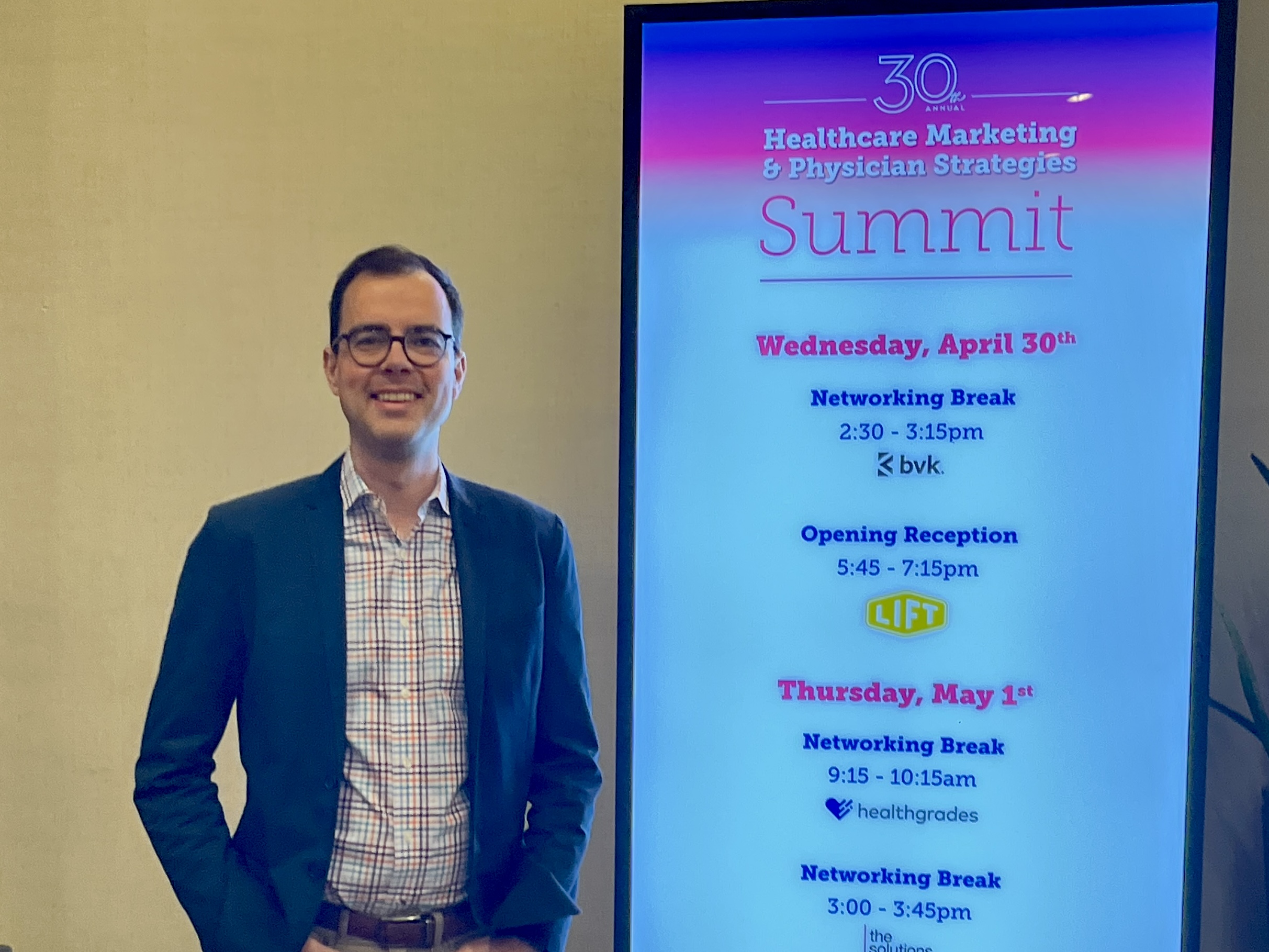From Search to Care: 10 Things Healthcare Marketers Should Rethink After HMPS25

The HMPS25 conference in Orlando brought together healthcare marketers, strategists, and digital leaders to talk shop about the future of healthcare marketing. Under the Florida sun and between standout sessions, a few clear signals emerged from the noise.
Here’s what stood out most and why it matters to you, the healthcare marketer navigating AI, budget cuts, privacy expectations, and a system still clinging to faxes.
1. Focus Your Healthcare Organization’s Website on the Transaction
Patients aren’t coming to your site for inspiration or education: they’re coming to get something done. Book an appointment. Pay a bill. Access the patient portal. Apply for a job.
The real value comes from removing friction. Streamline top user tasks, reduce clicks (aim for under five to book appointments), and use clear calls-to-action to help users complete their goals—fast.
If your site isn’t helping patients move from search to care effortlessly, it’s not doing its job.
Quick (ish) Win: How to Drill Into the EPIC Decision Tree
Appointment booking on healthcare websites often fails not because of bad design, but because of EPIC. Specifically, because of how the decision trees and workflows are set up inside EPIC (or similar EHRs). If you're linking users to a MyChart page and expecting high conversion, you need to control the experience beyond the website.
Marketers can’t fix this alone, but they can collaborate better. Sit down with operations. Map out what happens after a user clicks "Book Now." Audit the decision tree logic. Are patients forced to make confusing choices? Are slots actually available? Is the language clear?
Small tweaks—like adding context-specific deep links or removing redundant choices—can boost conversions dramatically. The booking journey starts on your website, but it succeeds or fails inside your EHR. Own more of that journey.
2. AI Is Reshaping Search: Context Now Beats Content
Not only is content now secondary to transactions, but AI is changing how patients find and consume healthcare information. With 84% of health-related searches now ending in zero clicks, Google and AI-generated summaries are answering questions before patients even reach your site. As a result, organic traffic is down 34% and traditional content strategies are losing their punch.
However, most healthcare websites still treat content as king.
The response isn’t more content. It’s smarter content.
Think context over quantity. Focus on answering specific search intentions within your care pathways, embedding real-time data like appointment availability, and using schema markup and metadata to improve visibility in AI-driven results. Move away from generic blog posts and toward intent-based transactional content that shortens the distance from question to care.
3. Your Website Is a Product
Stop treating your website like a campaign. It’s a product—with a roadmap, backlog, and user adoption curve. That mindset shift helps marketing teams escape reactive cycles and drive continuous, strategic improvements.
But progress requires more than tech. Without internal alignment, even the best ideas stall. Up to 30% of staff may actively resist AI or digital tools. Planning for change management helps teams cross the adoption chasm.
Start small. Run a site audit. Fix what’s broken. Improve the booking flow. Make data work harder. Align marketing, operations, and IT. Change doesn’t have to be flashy to matter, but it does have to stick.
4. Patients Want It All: Seamless, Personalized, and Private
Today’s patients expect the convenience of Netflix, and the data security of Fort Knox. They want personalized experiences (relevant prompts, saved preferences, consistent touchpoints) but without sacrificing privacy or trust.
This isn't a contradiction; it's the new baseline.
Whether they're booking by phone (88% of older patients still do) or navigating your portal, patients expect choice, continuity, and clarity. Self-service options for common tasks are no longer a bonus; they're a necessity. But every personalized interaction must be compliance-first: governed by strict policies, audit trails, and close coordination with your legal team.
The challenge is balance. Make digital channels work harder without leaving behind those who still prefer analog. And make personalization smarter without overstepping trust.
5. Tight Budgets Mean Tighter Targeting
The economy might be cooling, but expectations aren’t. Marketers need to tie campaigns directly to contribution margin. That’s where service line growth becomes key: because that's where the impact shows up in financial models.
Precision marketing is no longer just a buzzword. First-party CRM data and EMR insights help build segment-level strategies that convert better and justify spend. Target with purpose, not just personas.
Lead the Change Patients Are Already Expecting
My overall takeaway for healthcare marketing in 2025 isn’t about being louder or flashier. It’s about being faster, smarter, and more relevant. HMPS25 reminded us that the future favors those who simplify complexity, center the patient experience, and aren’t afraid to call out what’s broken. And fix it.
What change are you going to lead?
